Thank you for getting social about animal agriculture! Share any of the following graphics to your social media pages!

Dairy farms that participate in the FARM Program must have a written milking protocol. This ensures that animal caretakers are following the protocol, know how to behave quietly and confidently around animals and that the animals are well cared for during milking. https://bit.ly/3FqCEOD

One benefit of fertilizing the soil with cow manure is to help conserve water. When manure is used as a soil treatment, the water-holding capacity of soil is increased by 20%, resulting in reduced groundwater needed to grow crops! http://bit.ly/3qnvfb3

According to Frank Mitloehner, PhD, professor and air quality extension specialist at UC Davis, advances in the dairy community to increase productivity with less cows has allowed a significant reduction in carbon footprint. bit.ly/3eIkxJG

Dairy farmers use water responsibly in their milking parlors and in manure management and storage. Typically, wastewater is recycled to flush barn alleys and irrigate fields. bit.ly/3qnvfb3

Farmers take the responsibility of judicious antibiotic use seriously and take many precautions with their antibiotic-treated animals to ensure a safe food supply. bit.ly/34wTBlx

In only a decade, dairy farmers have made huge strides in reducing water & land usage, leading to a 19% reduction in the overall carbon footprint to produce a gallon of milk! Improvements in animal welfare, nutrition, health, & breeding also contributed. bit.ly/3xcNnHe
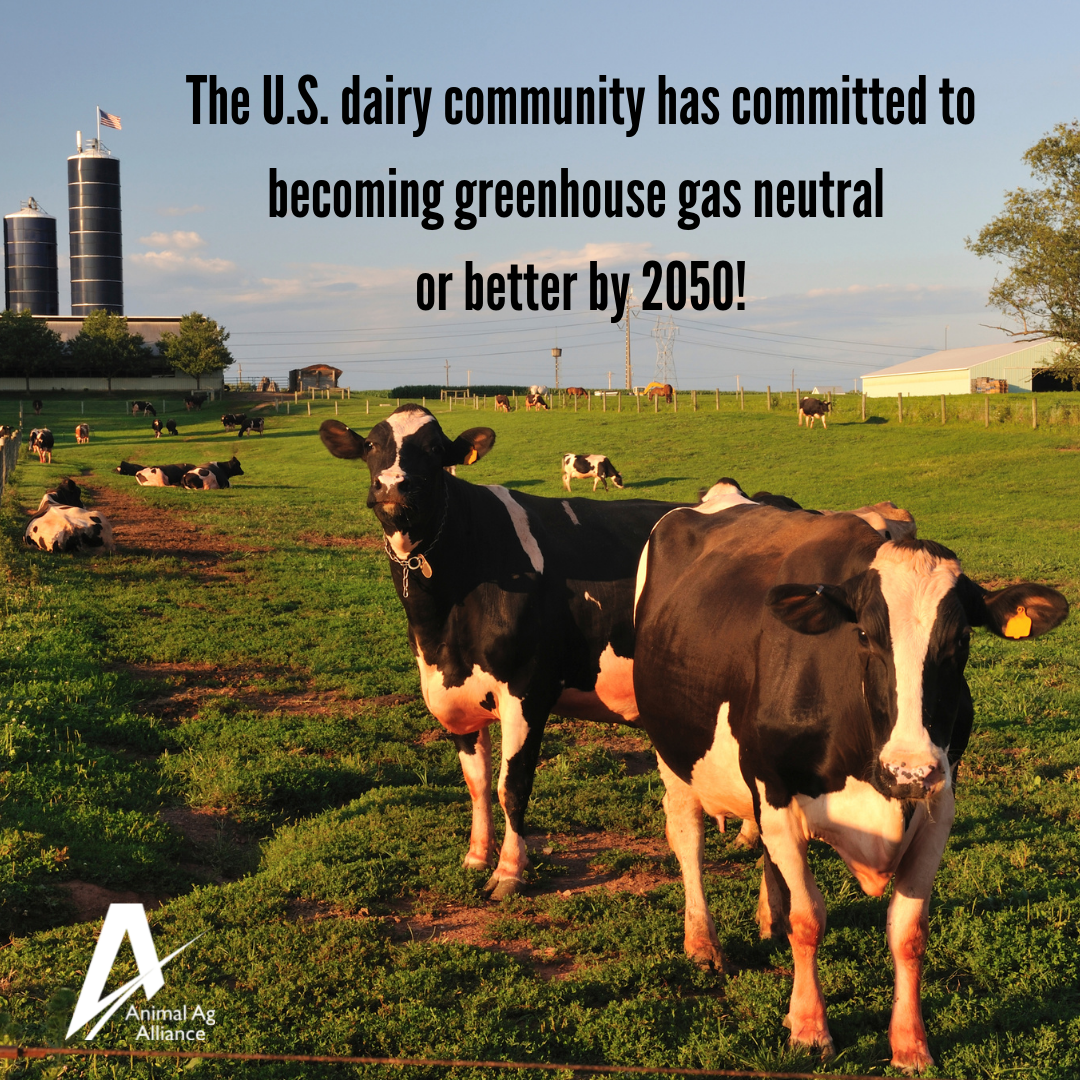
U.S. dairy farmers are working to increase their environmental sustainability. By 2050, they strive to: become carbon neutral or better, optimize water use while maximizing recycling, & improve water quality by optimizing manure and nutrient use. bit.ly/3xcNnHe
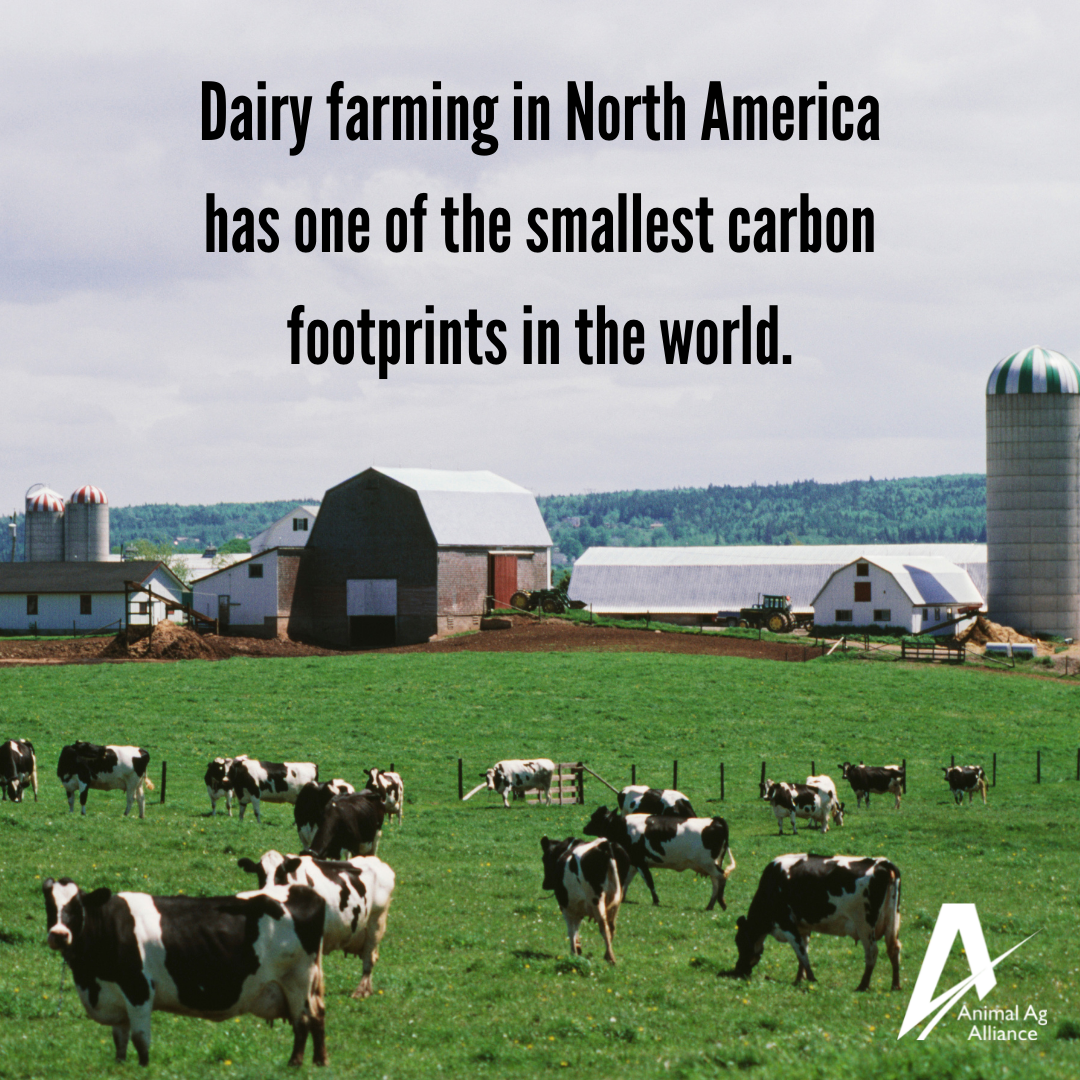
According to a 2010-2015 study from the UN FAO, dairy farming in North America has the lowest greenhouse gas emissions intensity of any region in the world! It was the only region to lower both emissions intensity & absolute emissions. https://bit.ly/3Y3pvlB

Dairy farmers are committed to reducing fuel emissions. They use LED lights in their barns, variable-speed vacuum pumps, high-efficiency fans & refrigeration. Many also convert biogas to electricity or renewable natural gas, & use wind & solar energy. https://bit.ly/3xcNnHe
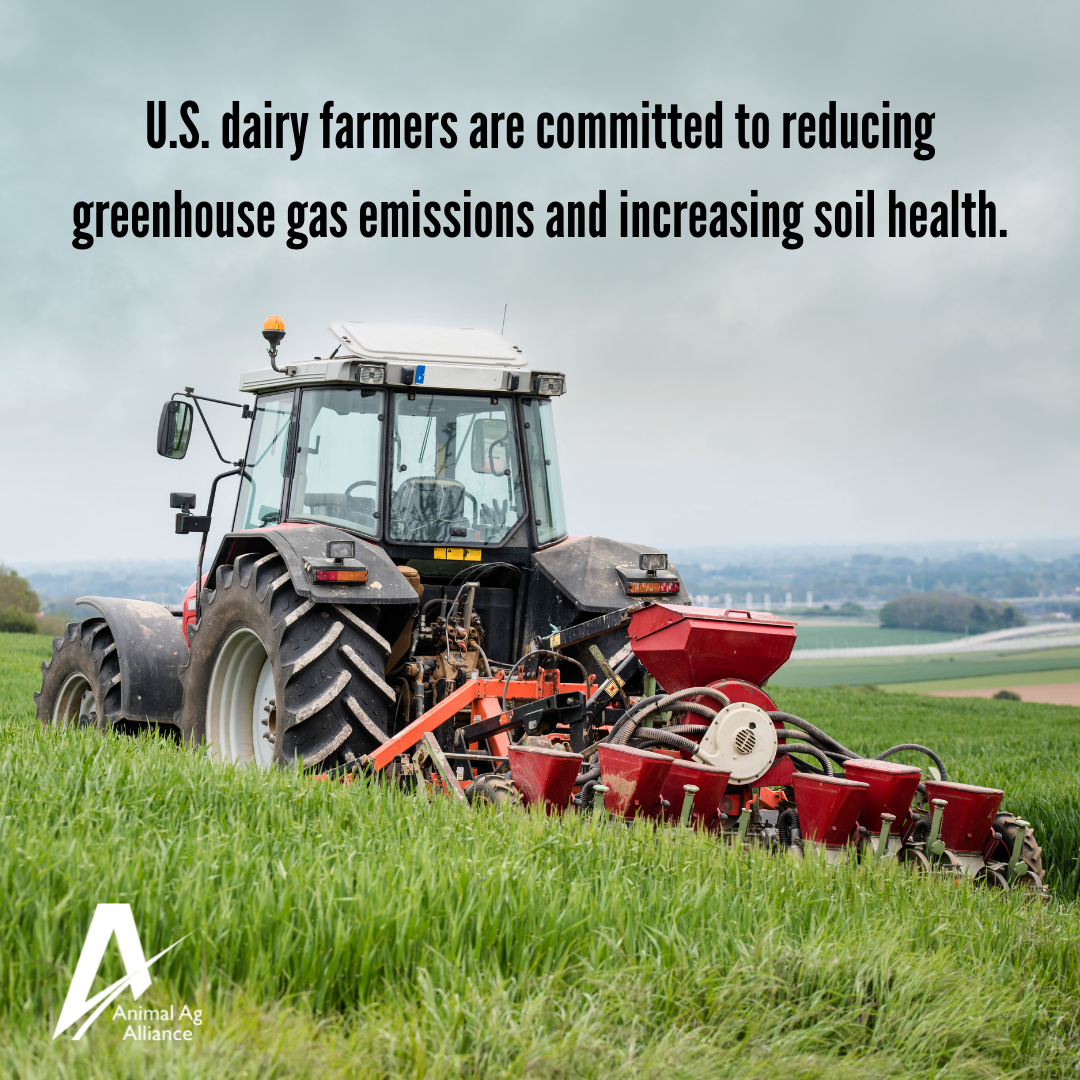
Dairy farmers use precision farming, renewable fertilizers, no/low-till farming, and cover crops to decrease emissions from crops while increasing soil health. https://bit.ly/3xcNnHe
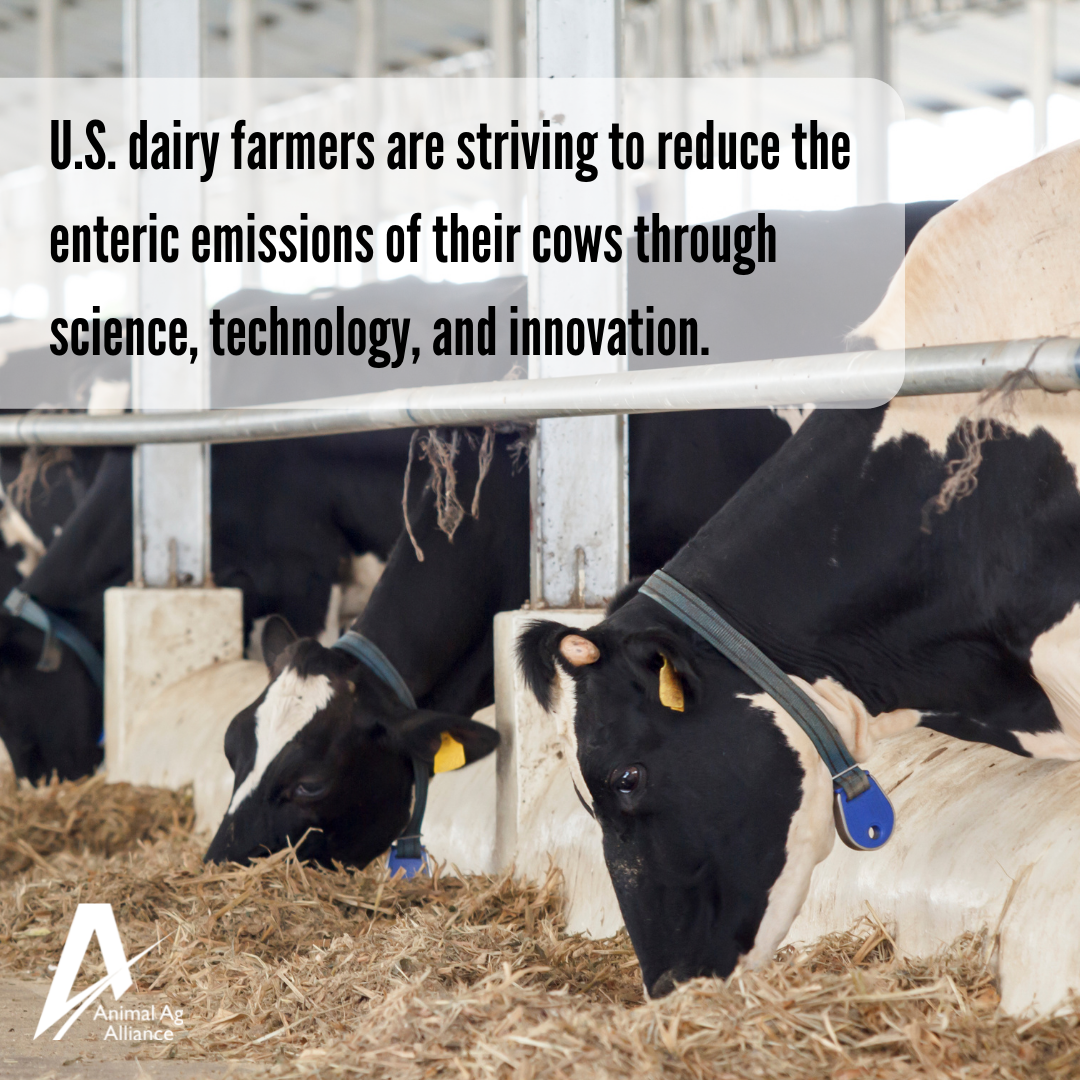
Enteric emissions are the natural bodily gas emissions of cattle from their digestive systems. These emissions can be reduced through the use of feed additives, optimized diets, genetics, farm management technology, and animal welfare and health. https://bit.ly/3xcNnHe
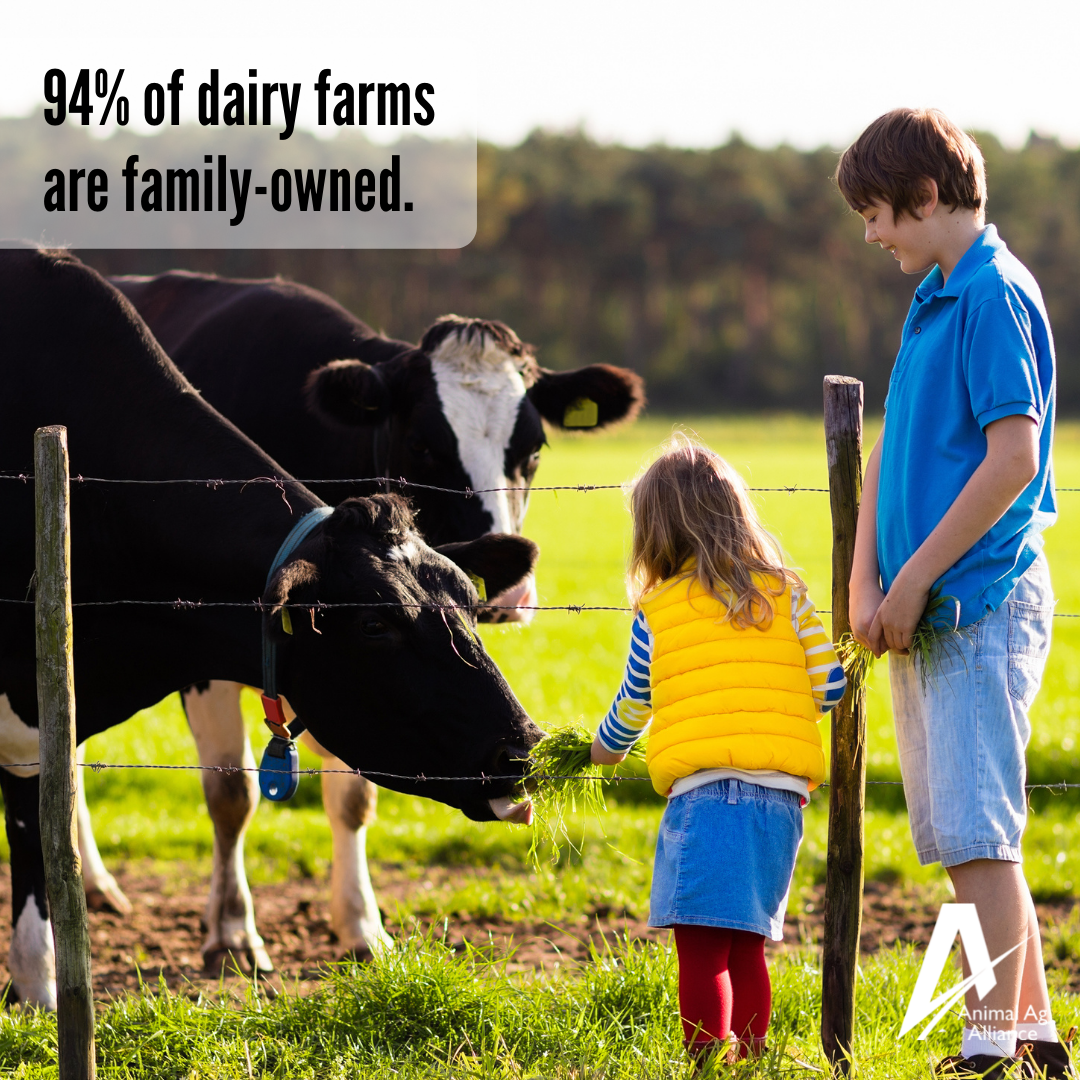
“Factory farming” is a term commonly thrown around when discussing animal agriculture. The truth is most farms are family farms. In the U.S. dairy community, specifically, 94% of farms are family-owned. bit.ly/3xcNnHe
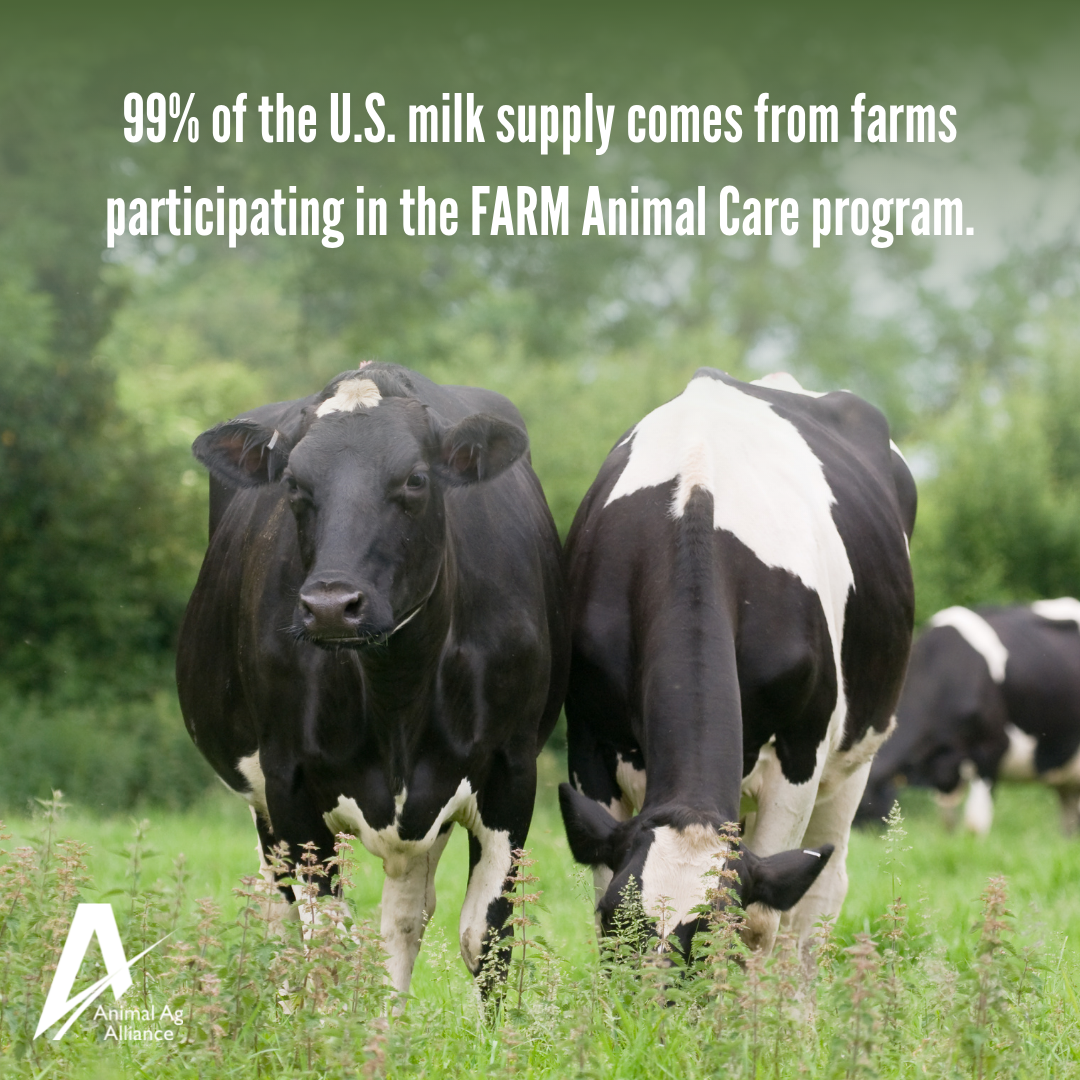
The FARM program brings together experts & stakeholders to institute science-based standards & tools for the dairy community in animal care, antibiotic stewardship, sustainability, & workforce welfare. It assures your milk comes from a good place. https://bit.ly/3xcNnHe
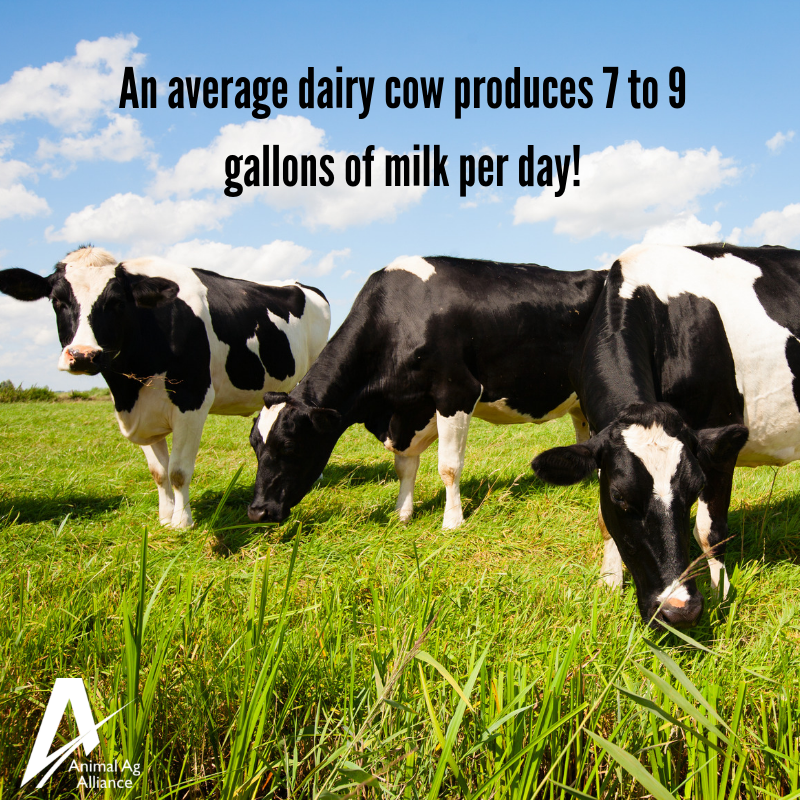
Ever wonder how much milk a dairy cow produces a day? http://bit.ly/2Ji6KIs
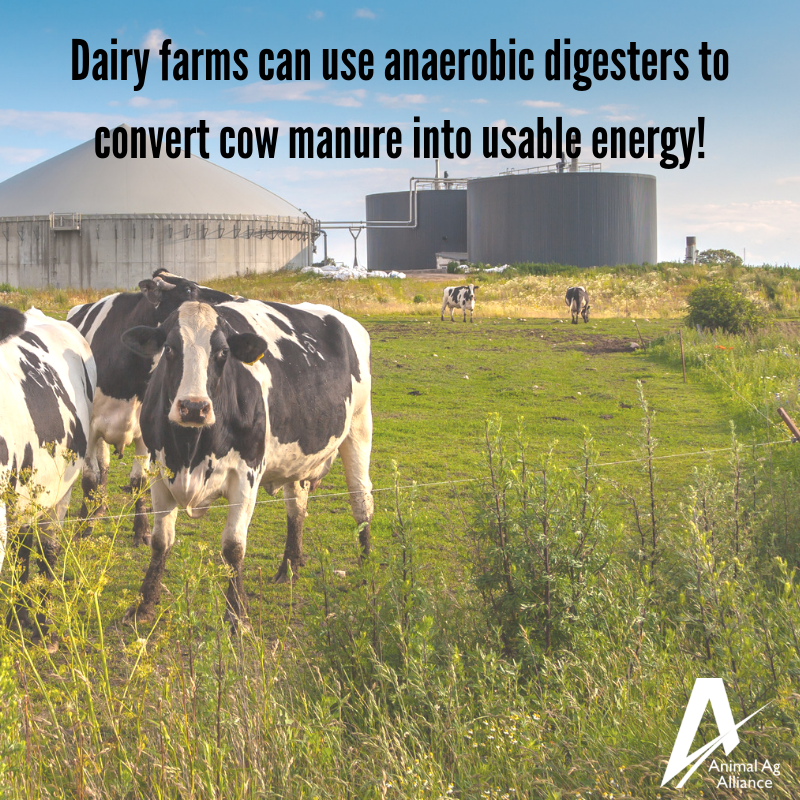
On some dairy farms, cow manure gets flushed or trucked over to digesters, a processing tank equipped to capture biogas. Bacteria break down the manure into carbon dioxide and methane, which can then be sent to a generator to be used as clean, renewable energy! https://bit.ly/3XN5Rus

Within a few hours after the birth, the farmer usually moves the calf to its own safe space, called a calf hutch. The space includes an individual house and fenced-in space. This best practice can be confusing when people don’t understand why it’s best to remove a calf from its mother. This practice has become an essential part of animal care on a farm for a few reasons:
- Protects the calf from harmful germs.
- Allows the farmer to watch each calf closely in a controlled setting.
- The farmer can provide individual care and track what the calf is eating and it’s overall health. https://bit.ly/3wR1JxH
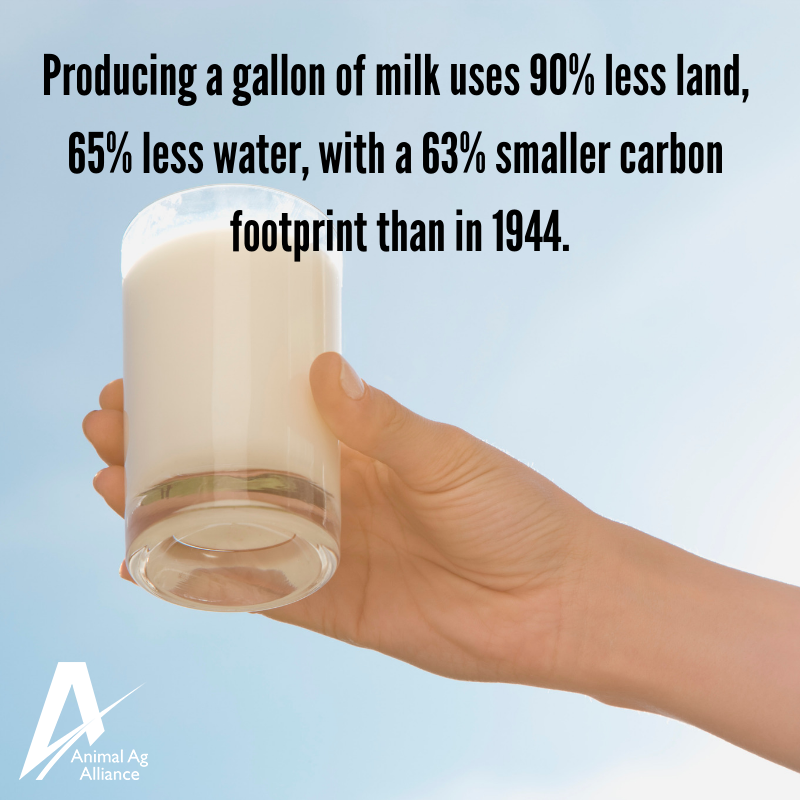
Raise a glass to dairy farmers! As of 2007, producing a gallon has a 63% smaller carbon footprint than in 1944, thanks to improvements made in cow comfort, health, nutrition and breeding. https://bit.ly/3XHoUpE
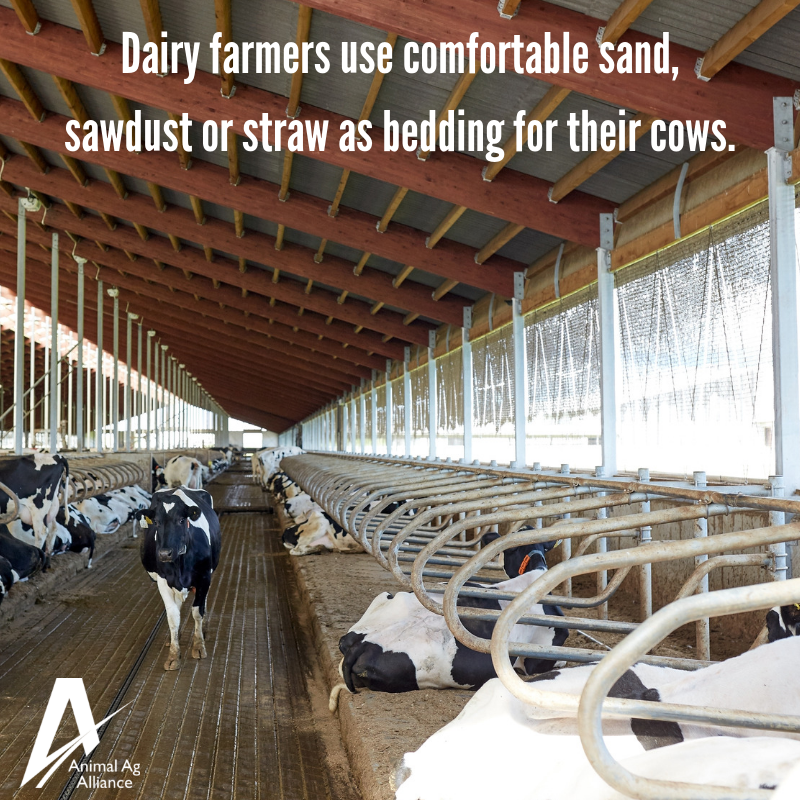
Cows don’t sleep standing up! Why would they when dairy farmers give them their own spaces with comfy bedding? In freestall barns, cows can get up from their bed to eat, drink or just take a stroll around the barn whenever they want! https://bit.ly/3H3ZjjC
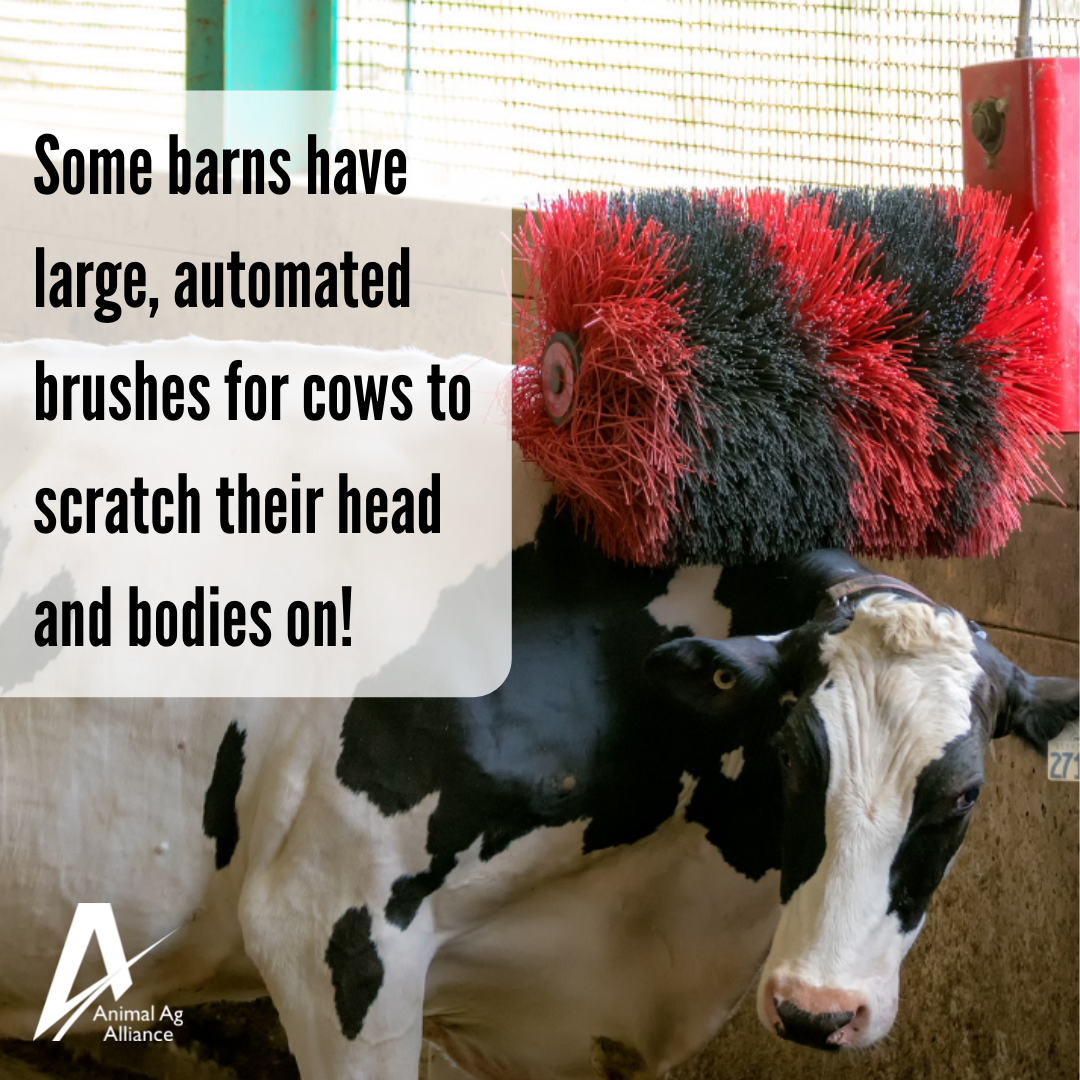
Animal care is important to farmers. On dairy farms, barns can be outfitted with large automated brushes so that cows can walk up and activate the rotating bristles to scratch their heads or bodies whenever they need additional comfort. http://bit.ly/2lPIOgK

A cow’s udder is thoroughly cleaned, dried and massaged with towels before milking. Disinfectant skin conditioners are applied to the udder before and after milking to keep the cow’s udder healthy. http://bit.ly/2lPBQs2
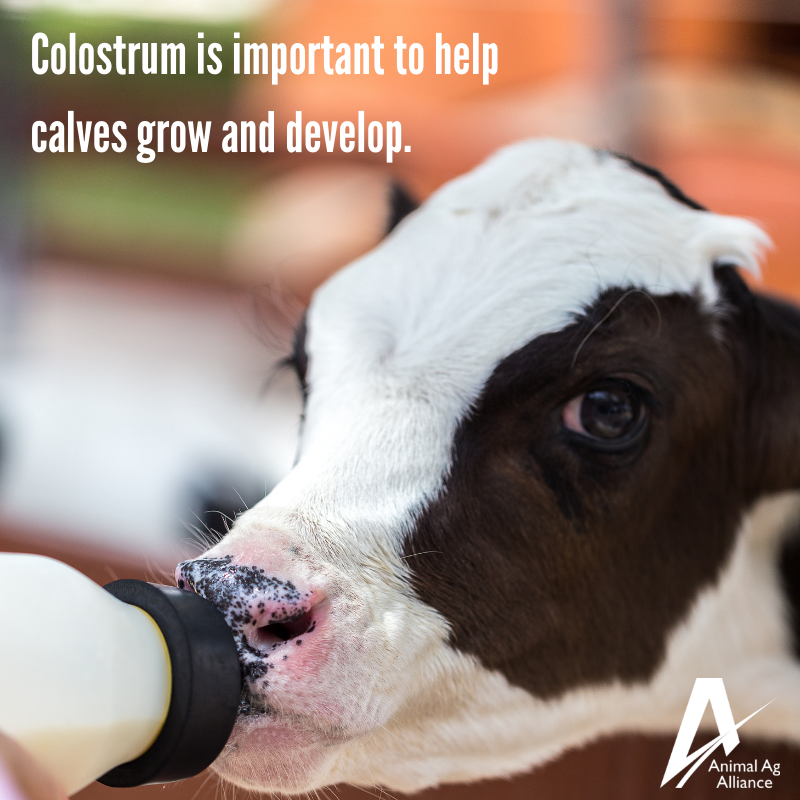
Calves are first fed colostrum (the milk from their mothers after the calf is born) which is packed full of nutrients to help them grow up healthy. After they are fed colostrum, the calf is switched to either whole milk or milk replacer. https://bit.ly/3HvJUJt
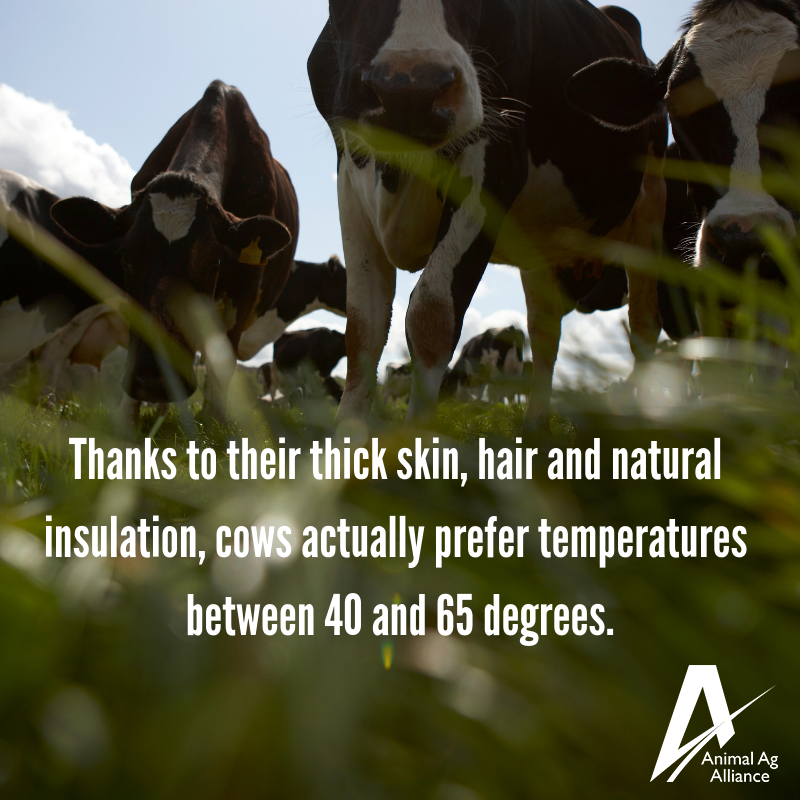
Ready for summer? Cows don’t mind the cooler weather thanks to their thick skin and hair! https://bit.ly/3Y1sXwV
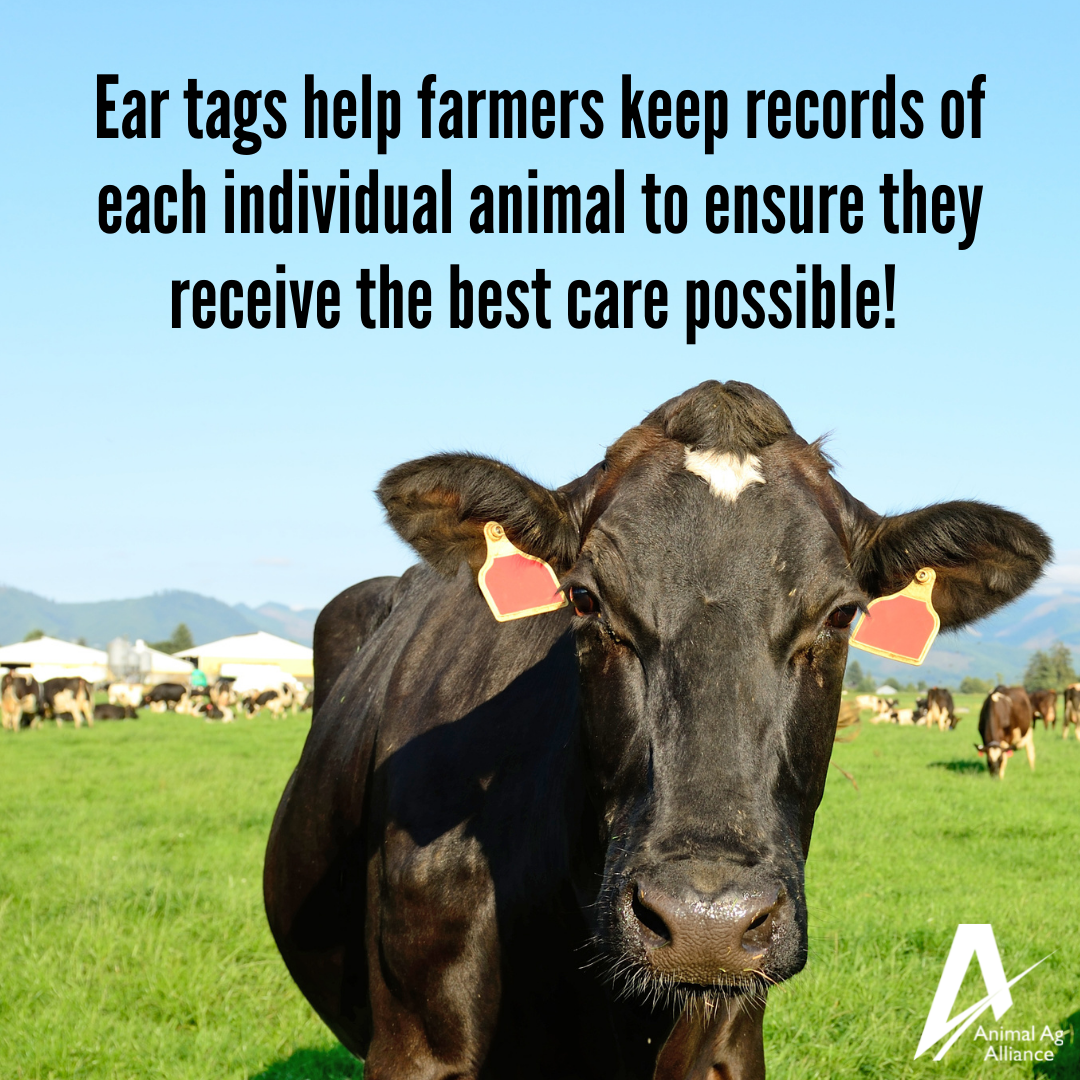
Ear tags allow farmers to record a cow’s body temperature, health and medication history and even the composition of each cow’s milk. The number also lets farmers know when a cow has been fed to prevent overfeeding. For some farmers, the standard, plastic ear tag has gone high tech with some tags automatically syncing information, such as a cow’s body temperature or daily movements, to a computer. For more about ear tags, visit: https://bit.ly/3HzSGHy
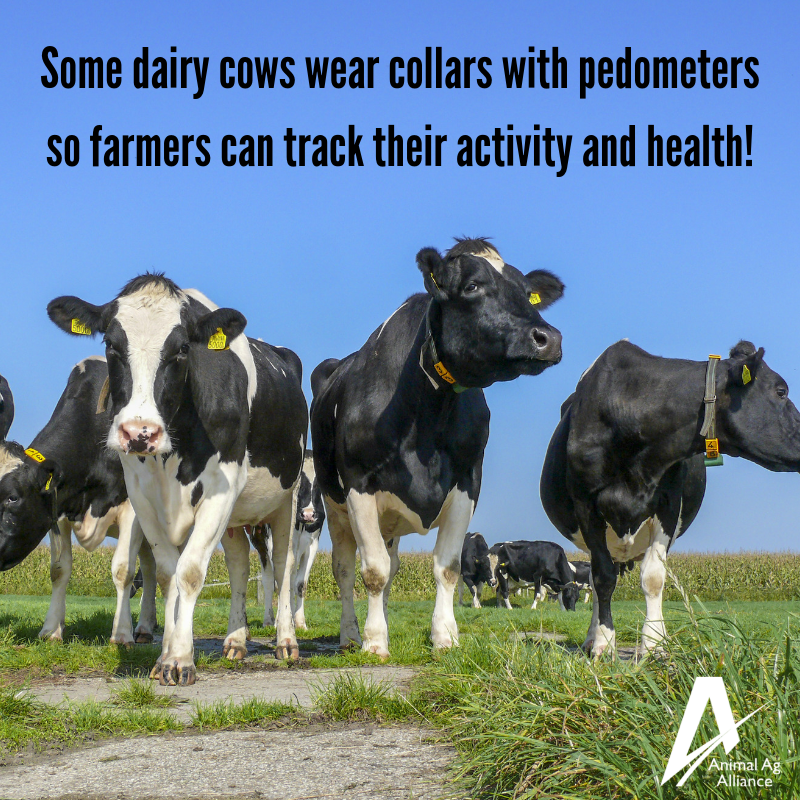
Did you know some dairy cows wear collars with pedometers? Pedometers help the farmer track how many steps each cow takes — which can help them figure out if a cow is not feeling well (decreased activity) or if they are in heat (increased activity)! Technology helps farmers keep a closer eye on their animals and provide the best care. It’s like a Fitbit for cows! https://bit.ly/3kMdpPm
Category: Social Media
Tag: Dairy, Social Media,
